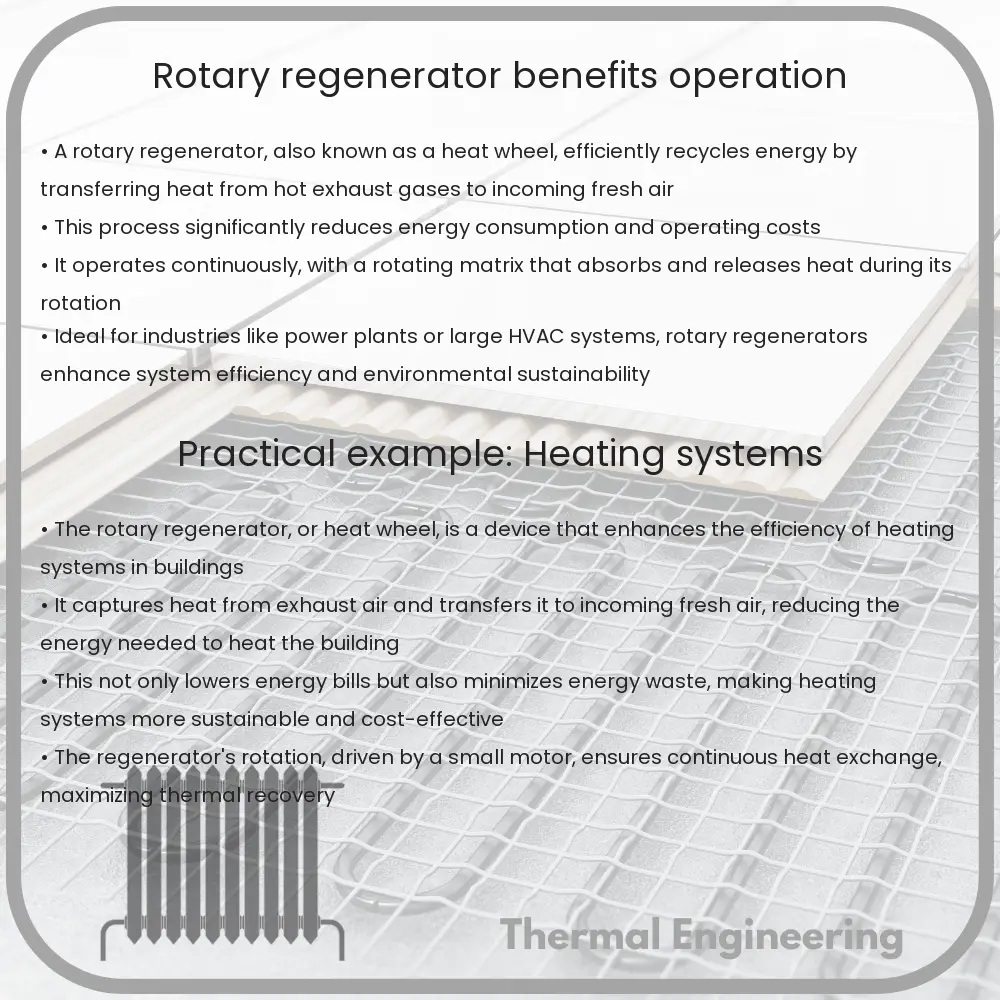Learn about rotary regenerators, devices crucial for enhancing energy efficiency and reducing costs in HVAC and industrial systems.

Understanding the Rotary Regenerator
Rotary regenerators, also known as rotary heat exchangers or rotary wheels, are advanced devices used to recover and transfer heat from one air stream to another in heating, ventilation, and air conditioning systems (HVAC), as well as in various industrial processes. This technology is critical for improving energy efficiency, reducing environmental impact, and lowering operational costs.
How a Rotary Regenerator Operates
The central component of a rotary regenerator is a large wheel comprised of a heat-absorbing material, typically metal or a specially treated fiber. This wheel rotates slowly between the inbound (supply) air stream, which needs to be conditioned, and the outbound (exhaust) air stream, from which energy can be recovered. As the wheel turns, it absorbs heat from the exhaust air and transfers it to the incoming cooler air.
This process involves several key steps:
- Heat Absorption: As the wheel passes through the outgoing exhaust air stream, the heat is absorbed into the wheel’s material.
- Rotation: The wheel rotates, carrying the absorbed heat towards the incoming air stream.
- Heat Transfer: When the heated section of the wheel enters the supply air stream, the stored heat is transferred to the cooler incoming air, thus pre-heating it before entering the facility.
The rotation speed of the wheel can be adjusted to control how much heat is transferred. This is crucial in maintaining the desired temperature and humidity levels within the space being conditioned.
Benefits of Rotary Regenerators
- Energy Efficiency: By recovering heat that would otherwise be expelled into the atmosphere, rotary regenerators significantly reduce the energy required to heat or cool air, leading to substantial energy savings.
- Cost Effectiveness: The initial investment in a rotary regenerator can often be offset by the reduction in HVAC operational costs over time.
- Environmental Impact: Lower energy consumption means reduced greenhouse gas emissions, contributing to a more sustainable operation.
- Flexibility: Rotary regenerators can be used in a wide range of applications, from small commercial buildings to large industrial facilities.
- Improved Air Quality: Some rotary regenerators can also remove contaminants from exhaust air, thereby improving the incoming air quality.
Applications of Rotary Regenerators
Rotary regenerators are widely used across several industries, including:
- Commercial and residential HVAC systems
- Automotive industry for waste heat recovery
- Power plants to enhance boiler efficiency
- Industrial drying processes where high energy recovery is essential
In conclusion, rotary regenerators are a crucial component in modern energy recovery and management systems, offering significant benefits in terms of energy efficiency, cost savings, and environmental conservation. The widespread implementation of such technologies stands as a testament to the ever-increasing emphasis on sustainability and efficiency in today’s industrial landscape.